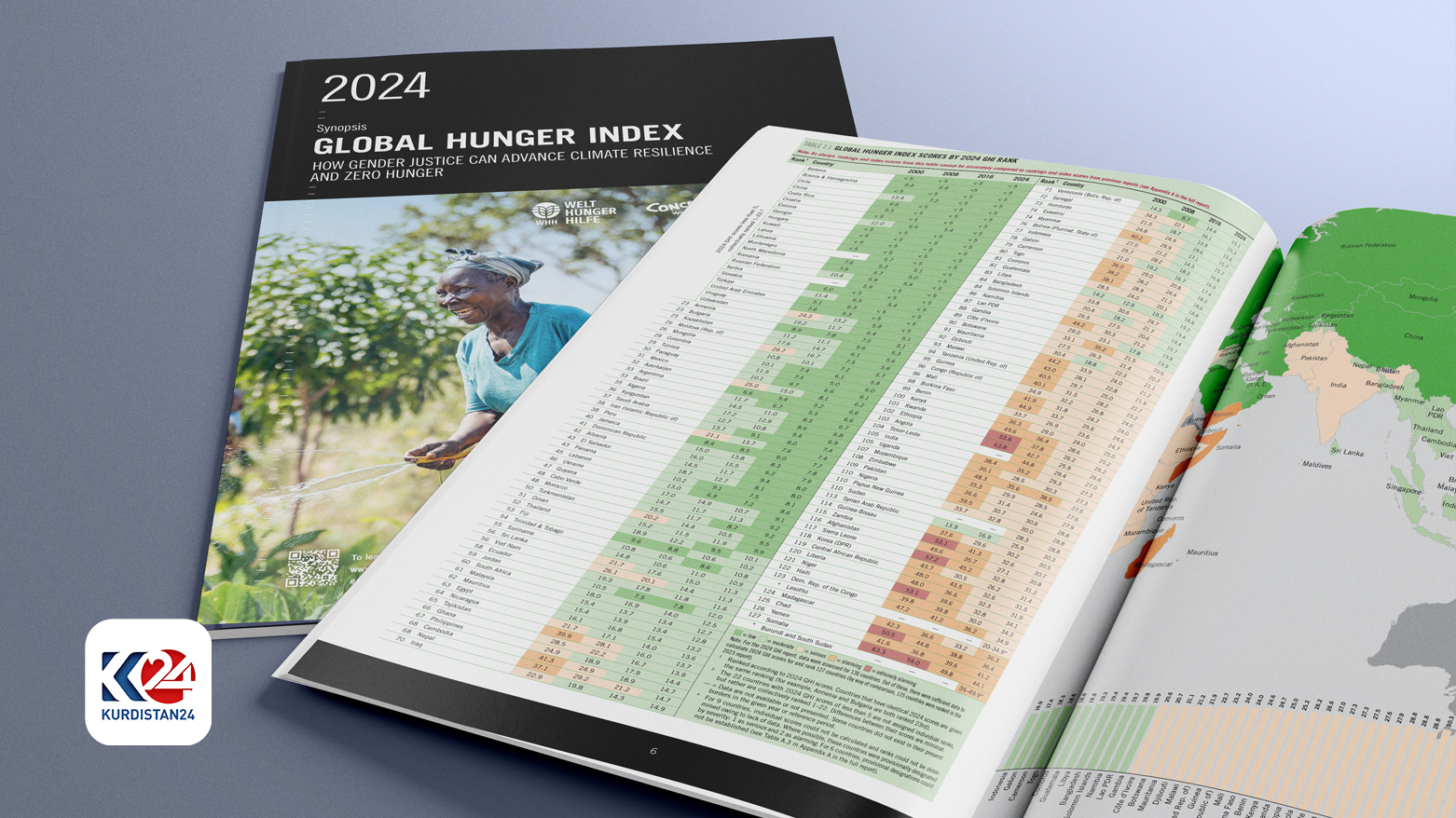Iraq sees sharp increase in Hunger Index score for 2024, ranks 70th globally
The surge in Iraq's GHI score is attributed to worsening malnutrition rates and child health indicators across the country. According to the report, 16.1 percent of the Iraqi population suffers from malnutrition.

ERBIL (Kurdistan24) – Iraq has witnessed a significant rise in its Global Hunger Index (GHI) score, according to the latest report released on Friday, October 11, 2024, by the World Hunger Index.
The report reveals that Iraq’s hunger index score has jumped by six points, from 1.1 in 2023 to a concerning 14.9 in 2024.
This sharp increase has moved Iraq to 70th place out of 127 countries on the global scale, up from its previous ranking of 64th last year.
The surge in Iraq's GHI score is attributed to worsening malnutrition rates and child health indicators across the country. According to the report, 16.1 percent of the Iraqi population suffers from malnutrition.
Additionally, 15.5 percent of children under the age of five are stunted, and 4 percent of children under five are malnourished, highlighting the country’s ongoing struggle with child nutrition and health.
The report also indicates that 2.4 percent of children under five die before reaching their fifth birthday.
The rise in Iraq’s hunger index underscores the urgent need for comprehensive policy measures to combat food insecurity and improve child health, as the country faces ongoing challenges that threaten the well-being of its population.
Global Hunger Crisis Deepens
The 2024 Global Hunger Index (GHI) paints a grim picture for the fight against hunger, revealing stagnating progress and a worsening global food crisis. The report highlights that the world is far from meeting the United Nations' Zero Hunger target by 2030.
With a current global GHI score of 18.3—barely an improvement from 18.8 in 2016—hunger remains a significant threat, particularly in Africa South of the Sahara and South Asia.
According to the GHI report, which uses undernourishment, child stunting, child wasting, and child mortality to assess hunger, the situation is particularly severe in 42 countries, where hunger levels are categorized as "serious" or "alarming."
Six countries, including Somalia, South Sudan, and Yemen, face alarming levels of hunger, exacerbated by conflicts, climate change, and economic instability.
The 2030 Zero Hunger goal, once a beacon of hope, now appears out of reach. At the current rate of progress, experts predict that global hunger may not be eradicated until 2160—well over a century from now.
The report warns that if the world does not accelerate its efforts, we will face a protracted hunger crisis that will disproportionately affect the most vulnerable populations.
Multiple Crises Worsening Hunger
The 2024 report attributes much of this stagnation to overlapping global crises. Armed conflicts, such as those in Gaza and Sudan, along with severe economic downturns, rising food prices, and worsening climate conditions, have severely impacted the world’s poorest nations.
Over 115 million people have been displaced, either due to persecution, violence, or climate-related disasters, intensifying food insecurity for millions more.
Progress in reducing hunger has also reversed in 22 countries, including several in Africa and Asia, where hunger has worsened since 2016.
“The world is facing unprecedented levels of food insecurity, driven by a perfect storm of climate change, conflicts, and economic shocks,” the report states.
Pockets of Progress Amid the Crisis
While the global hunger outlook remains bleak, some countries have shown remarkable resilience. Bangladesh, Nepal, and Mozambique, despite still facing high hunger levels, have made significant strides in reducing their GHI scores.
These countries demonstrate that with targeted policies and international support, even those hardest hit by hunger can move towards recovery.
Gender Inequality and Climate Change: A Compounding Crisis
The report also emphasizes the intersection of gender inequality, food insecurity, and climate change, noting that women and girls often bear the brunt of the crisis.
In countries affected by conflict, the gender gap in food security is as high as 19 percentage points, with women disproportionately affected by malnutrition and hunger.
As climate change accelerates, the situation is expected to worsen, with women in rural areas particularly vulnerable to food shortages and extreme weather conditions.
Addressing gender inequality, according to the GHI, is not only a matter of justice but is essential for building climate resilience and achieving food security. “Without gender justice, we cannot hope to achieve sustainable solutions to hunger,” the report notes.
A Call for Global Action
The 2024 Global Hunger Index calls for immediate and sustained action from governments, international organizations, and civil society to address the root causes of hunger.
It recommends investing in climate-resilient food systems, empowering women and marginalized groups, and ensuring that hunger early warning systems trigger prompt political action.
With less than a decade left to meet the 2030 Zero Hunger goal, the international community faces a stark choice: continue with business as usual, or take bold, transformative action to prevent a prolonged global hunger crisis.
For further details, the full 2024 Global Hunger Index report can be accessed at here.
